 The Garden Pavilion / NCDA. Image © Harold De Puymorin
The Garden Pavilion / NCDA. Image © Harold De Puymorin
Marble, a material often associated with ancient Greek sculptures, classical architecture, and the Italian Renaissance, has solidified its position as an elite and timeless material. With monuments like St. Peter's Basilica and the Taj Mahal showcasing its grandeur, marble has proven itself to be a material that stands the test of time. In today's world, where sustainability, feasibility, and affordability are key considerations in construction materials, marble remains a top choice. In this article, we explore the past, present, and future of marble in interior design.
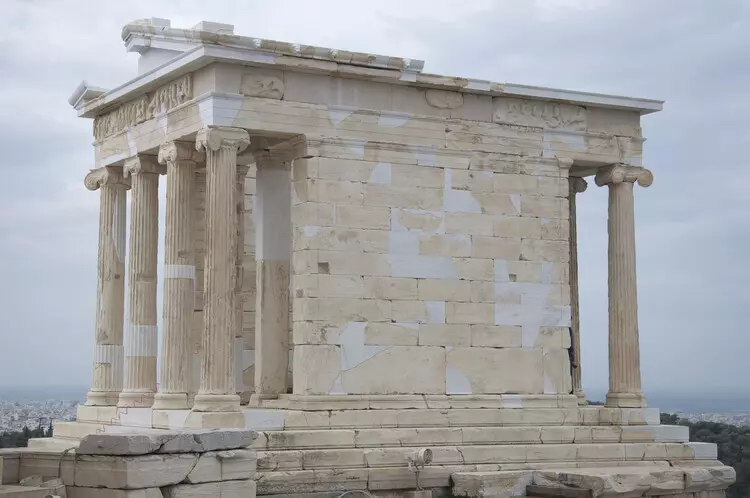 + 23
+ 23
Marble is a natural stone that forms from the metamorphic transformation of limestone and other sedimentary carbonate rocks under extreme heat and pressure. Found across the globe, from the United States to Egypt and India, each type of marble boasts unique veins and color gradations resulting from impurities in the limestone. Architects praise marble for its strength, heat resistance, durability, versatility, affordability, and vast array of colors and textures. Whether applied to interiors, facades, or structural foundations, marble remains highly sought after.
 Grupo Arca Showroom / Esrawe Studio. Image © César Béjar
Grupo Arca Showroom / Esrawe Studio. Image © César Béjar
The use of marble in construction dates back to the first century, with significant usage in countries around the Mediterranean Sea. Greek marble extractions took place on the islands of Paros and Naxos in the Aegean Sea, making them dominant players in the marble industry. In Anatolia, present-day Turkey, marble was utilized in the construction of homes, tombs, and temples during various historical periods, leading to the creation of remarkable structures such as the Temple of Artemis and Mausoleum at Halicarnassus, one of the Seven Wonders of the World.
 The exaggerated Ionic capitals in the Temple of Athena Nike purportedly direct one’s gaze to the sea, a reference to the victory over Persia that allowed Athens to take its place as the premier city-state in Ancient Greece. Image Courtesy of Flickr user Aleksandr Zykov (licensed under CC BY-SA 2.0)
The exaggerated Ionic capitals in the Temple of Athena Nike purportedly direct one’s gaze to the sea, a reference to the victory over Persia that allowed Athens to take its place as the premier city-state in Ancient Greece. Image Courtesy of Flickr user Aleksandr Zykov (licensed under CC BY-SA 2.0)
Over the centuries, marble extraction techniques and transportation methods have evolved. Initially reserved for monuments and significant buildings due to its expense and time-consuming nature, the introduction of electric hoists in the 20th century revolutionized marble processing. With cutting-edge technologies, quarries today facilitate the extraction process and enable the development of intricate interior finishes, furniture pieces, and accessories made exclusively from marble.
 12 Warren / DDG. Image © Field Condition
12 Warren / DDG. Image © Field Condition
 Sky Center / PAL Design. Image © Qilin Zhang
Sky Center / PAL Design. Image © Qilin Zhang
Despite color, application, and geographical divisions, the marble market is estimated to be valued at over USD 18 billion in 2021, and its popularity shows no signs of waning. Marble's physical characteristics and timeless aesthetic have made it a favorite material for architects and designers, especially for kitchen countertops, flooring, and bathroom applications. From an environmental standpoint, some argue that marble extraction is ecologically harmful and energy-intensive. However, many consider it a sustainable material since it is directly sourced from the Earth, exceptionally durable, and easily recyclable for decorative or alternative applications.
Interiors
In addition to its strength and resistance, marble's aesthetic appeal, unique veins, and diverse color palette make it one of the most popular finishes for interior design projects. There are four main types of marble finishes to choose from:
- Raw: Marble that is just sawn off and left as it was removed from its deposit.
- Polished: A smooth and glossy appearance.
- Tumbled: An intermediate finish that gives an opaque and smooth appearance while preserving the natural color of the rock.
- Brushed: The surface is slightly uneven with a slight satin shine, achieved by brushing with diamond abrasive brushes.
Flooring
- The Apartment / DO Architects
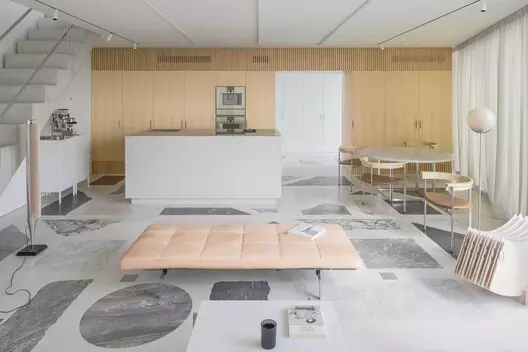 The Apartment / DO Architects. Image © Norbert Tukaj
The Apartment / DO Architects. Image © Norbert Tukaj - Mikveh Oh / arqhé studio
 Mikveh Oh / arqhé studio. Image © Yoshihiro Koitani + Aby Helfon y Ramón Helfon
Mikveh Oh / arqhé studio. Image © Yoshihiro Koitani + Aby Helfon y Ramón Helfon
Walls
- Céline Flagship Store / Valerio Olgiati
 Céline Flagship Store / Valerio Olgiati. Image © Mikael Olsson
Céline Flagship Store / Valerio Olgiati. Image © Mikael Olsson - FAUNO HOUSE - CASA COR 2019 / Leo Shehtman Arquitetura e Design
 FAUNO HOUSE - CASA COR 2019 / Leo Shehtman Arquitetura e Design. Image © Denilson Machado - MCA Estúdio
FAUNO HOUSE - CASA COR 2019 / Leo Shehtman Arquitetura e Design. Image © Denilson Machado - MCA Estúdio
Kitchen Applications
- Grange Residence / Conrad Architects
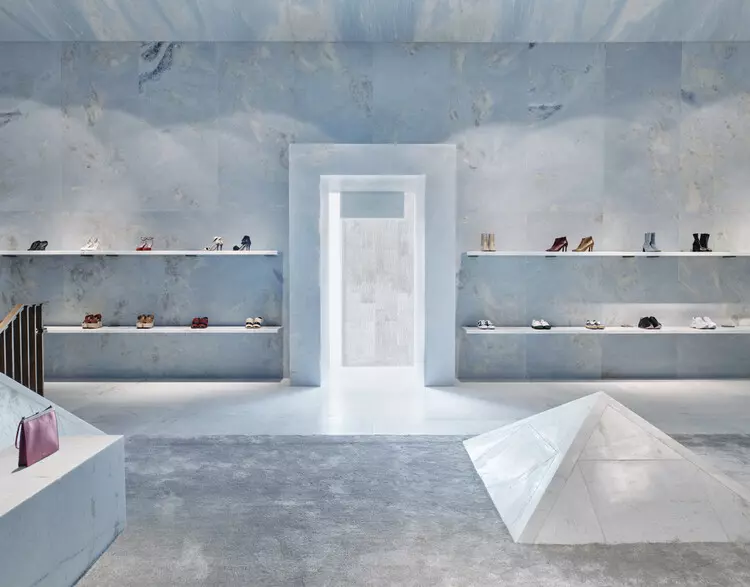 Grange Residence / Conrad Architects. Image © Timothy Kaye
Grange Residence / Conrad Architects. Image © Timothy Kaye - Bestseller Shanghai Office / Linehouse
 Bestseller Shanghai Office / Linehouse. Image © Dirk Weiblen
Bestseller Shanghai Office / Linehouse. Image © Dirk Weiblen
Bathroom Fixtures
- Maison à Colombages Refurbishment / 05AM Arquitectura
 Maison à Colombages Refurbishment / 05AM Arquitectura. Image © Adrià Goula
Maison à Colombages Refurbishment / 05AM Arquitectura. Image © Adrià Goula - BoZen Bar / Central Arquitectos
 BoZen Bar / Central Arquitectos. Image © Joao Morgado
BoZen Bar / Central Arquitectos. Image © Joao Morgado
Furniture
- Bent dan Light / BK Interior Design & Architectural Planning
 Bent dan Light / BK Interior Design & Architectural Planning. Image © Mario Wibowo
Bent dan Light / BK Interior Design & Architectural Planning. Image © Mario Wibowo - Mercuric Table - Zaha Hadid x CITCO
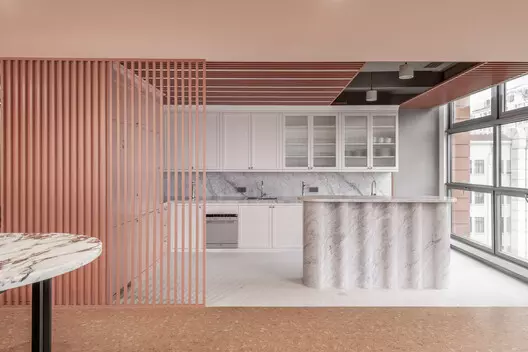 Mercuric Table - Zaha Hadid x CITCO. Image © CITCO
Mercuric Table - Zaha Hadid x CITCO. Image © CITCO - Paso Doble / Babled
 Paso Doble by Babled. Image © Babled
Paso Doble by Babled. Image © Babled
Decorative / Accent Elements
- Iskra / NOWADAYS office
 Iskra / NOWADAYS office. Image © Yuri Palmen
Iskra / NOWADAYS office. Image © Yuri Palmen - RÒMOLA / Andrés Jaque Architects
 RÒMOLA / Andrés Jaque Architects. Image © Miguel de Guzmán y Rocío Romero. Imagen Subliminal
RÒMOLA / Andrés Jaque Architects. Image © Miguel de Guzmán y Rocío Romero. Imagen Subliminal
Facades
Marble has long been used as a symbol of prestigious social status and quality, as evident in structures like the Acropolis of Athens, the Roman Coliseum, and the Taj Mahal. Apart from its stunning appearance, marble offers resistance to heat, cold, humidity, and erosion, making it ideal for exterior applications.
- Marble House / Openbox Architects
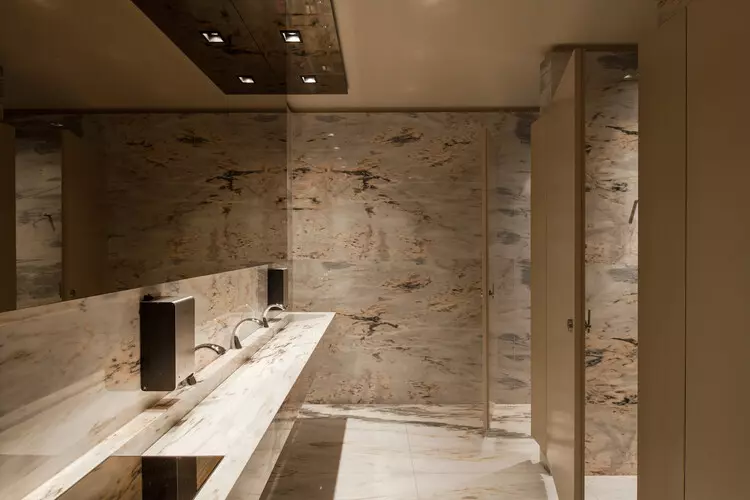 Marble House / Openbox Architects. Image Courtesy of Openbox Architects
Marble House / Openbox Architects. Image Courtesy of Openbox Architects - Musée d'arts de Nantes / Stanton Williams
 Musée d'arts de Nantes / Stanton Williams. Image © Hufton+Crow
Musée d'arts de Nantes / Stanton Williams. Image © Hufton+Crow - Marsotto Milan Showroom / nendo
 Marsotto Milan Showroom / nendo. Image © Hiroki Tagma
Marsotto Milan Showroom / nendo. Image © Hiroki Tagma
Structural
Marble's availability and ease of shaping for construction purposes have made it one of the most widely used materials in ancient architecture. Today, marble remains a sought-after structural material due to its physical characteristics and sustainability.
- Acne Studios Stockholm Store / ARQUITECTURA-G
 Acne Studios Stockholm Store / ARQUITECTURA-G. Image © José Hevia
Acne Studios Stockholm Store / ARQUITECTURA-G. Image © José Hevia - Play Contract / Superflex + KWY.studio
 Play Contract / Superflex + KWY.studio. Image © Torben Eskerod
Play Contract / Superflex + KWY.studio. Image © Torben Eskerod
To explore more marble projects, visit our My ArchDaily folder curated by our team.
This article is part of our ArchDaily Topics: The Future of Construction Materials series. Each month, we delve deep into a topic, highlighting how architects and designers are pushing boundaries and incorporating new elements into interior spaces worldwide. We value the input of our readers, so if you have any specific ideas or suggestions, please feel free to submit them.
This article is part of the ArchDaily Topics: The Future of Construction Materials. Visit us monthly to explore in-depth articles, interviews, news, and projects related to this topic. At ArchDaily, we welcome contributions from our readers, so if you have an article or project you'd like to share, feel free to contact us.









